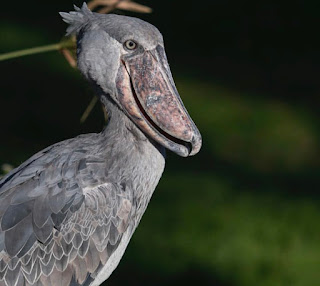A chook Out of Time
The shoebill, scientifically referred to as Balaeniceps rex, is a actually exceptional avian species. Its implementing stature, coupled with its specific, oversized bill, has earned it a reputation as one of theinternational's most precise and captivating birds. regularly referred to as a living fossil, the shoebill evokes images of prehistoric creatures, a testomony to its historic lineage.
physical Description
standing tall at an average top of 110 to one hundred forty centimeters (forty three to 55 inches), the shoebill is a formidable presence. Its frame is predominantly gray, with a long neck and legs tailored for wading via the swamps it calls home. however, it is certainly the fowl’s invoice that steals the show. This big, shoe-shaped appendage, measuring up to 20 centimeters (8 inches) in length, is a surprise of evolutionary engineering. Its top and lower mandibles come collectively with a powerful snap, allowingthe shoebill to seize and preserve onto slippery prey with splendid efficiency.
at the same time as the invoice is commonly used for feeding, it also serves as a formidable weapon. Shoebills are able to turning in powerful blows with their payments, a tactic used both for protection and for dispatching prey. Their massive, yellow eyes are surprisingly properly-adapted for low-lightsituations, permitting them to hunt successfully in the murky waters in their swampy habitat.
Habitat and Distribution
The shoebill is endemic to the sizable wetlands of tropical East Africa. Its range extends from South Sudan inside the north to Zambia within the south, with isolated populations observed in countries together with Uganda, Tanzania, and the Democratic Republic of the Congo. those birds thrive in big, permanentswamps characterised via dense plants and shallow water. the supply of appropriate habitat is a essential aspect restricting the shoebill's populace.
weight loss plan and hunting conduct
The shoebill is a carnivorous chicken, with a diet commonly including big fish, together with lungfish and catfish. however, they may be opportunistic feeders and will also eat different aquatic animals, which include frogs, snakes, turtles, and even young crocodiles.
Shoebills are ambush predators, relying on persistence and stealth to seize their prey. They often stand immobile inside the water for prolonged durations, looking ahead to an unsuspecting fish or othercreature to come back within hanging distance. whilst the opportunity arises, they strike with lightning speed, using their powerful invoice to snatch their prey from the water.
Breeding and existence records
Shoebills are monogamous birds, forming pair bonds for life. They generally nest in large colonies, constructing large platforms of flora inside the water. The girl lays one to a few white eggs, which can be incubated by both mother and father. The chicks are altricial, that means they're born helpless and require enormous parental care.
The younger shoebills are included in a dense coat of gray down and are completely dependent on their parents for meals. They develop rapidly, and within a few months, they may be able to leaving the nest and following their mother and father as they forage for food.
Conservation fame
The shoebill is classed as vulnerable at the IUCN purple list, facing threats from habitat loss, human disturbance, and illegal looking. The conversion of wetlands into agricultural land has had a devastating impact on the species, reducing the supply of suitable habitat. additionally, shoebills are regularly killed for his or her feathers, which might be used in conventional ceremonies and crafts.
Conservation efforts are underway to defend the shoebill and its habitat. those efforts consist of the status quo of blanketed regions, network-based conservation initiatives, and public consciousnesscampaigns. by means of working collectively to conserve this iconic species, we can help ensure that the shoebill keeps to grace the wetlands of Africa for generations to come back.
The Shoebill in lifestyle and Mythology
The shoebill has captured the imagination of humans around the arena, inspiring awe and surprise. Its unique appearance has caused its inclusion in folklore and mythology, wherein it is frequently depicted as a effective and mysterious creature. The shoebill has also grow to be a popular situation for flora and fauna documentaries and photography, helping to raise awareness of its plight and the importance of wetland conservation.
The Shoebill's function in the surroundings
As a top predator in its ecosystem, the shoebill plays a critical position in maintaining the balance of lifeinside the wetlands. by means of controlling populations of fish and different aquatic animals, shoebills help to save you overgrazing of aquatic vegetation and maintain the overall fitness of the environment.
Conclusion
The shoebill is a truly splendid fowl, a residing testament to the wonders of nature. Its prehistoric appearance, coupled with its unique adaptations and ecological importance, make it a species worthy of our admiration and safety. via knowledge the threats going through the shoebill and supportingconservation efforts, we are able to help ensure that this iconic chicken maintains to thrive inside thewetlands of Africa for generations to return.


